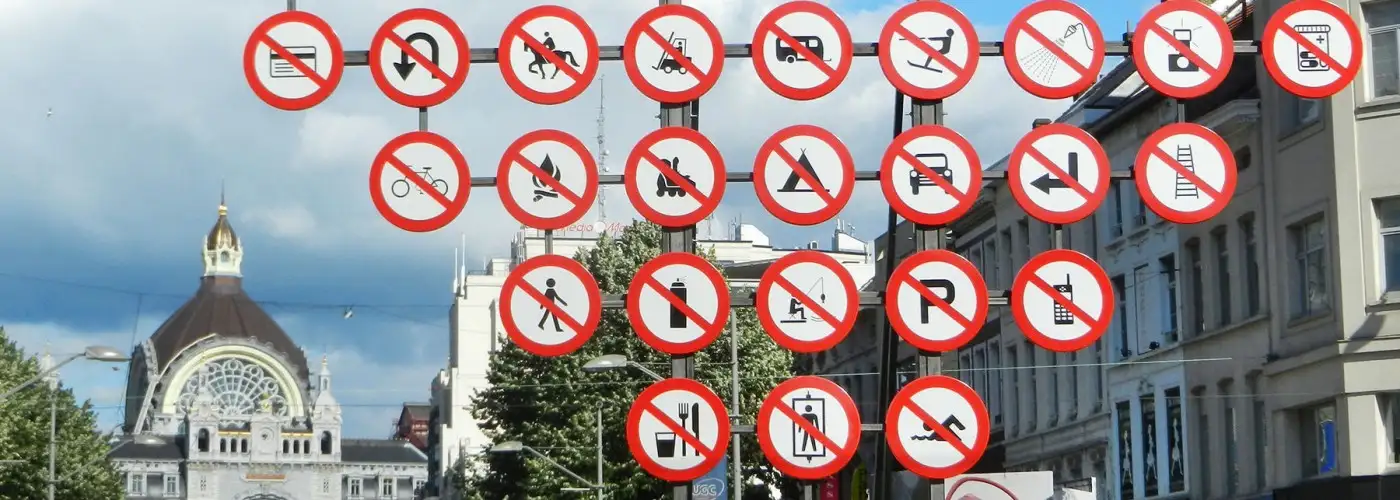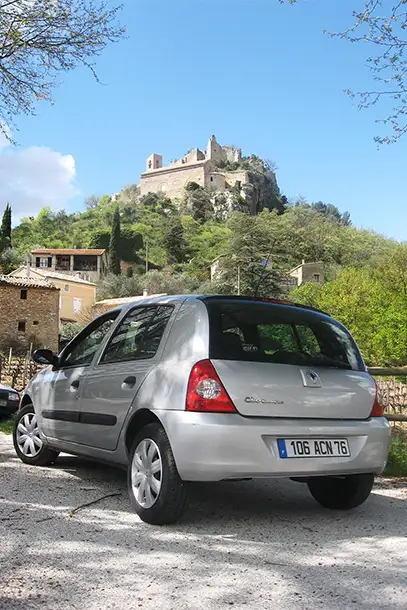Even with Europe’s super-efficient public transportation system, there are times when it makes sense to rent a car. Having your own wheels is ideal for getting to more remote or rural places (that aren’t covered as well by public transportation): England’s Cotswolds, Norway’s fjord country, Spain’s Picos de Europa mountains, France’s Normandy beaches, Tuscan hill towns…
Even if you don’t plan on driving in Europe, bring your license and a credit card. That way it’s easy to rent a car for a day on a whim (and about $50–100). Your U.S. license generally works just fine. While some countries (e.g., Austria, Italy, and Spain) say they require you to also have an International Driving Permit (an official translation of your license, easy to get at AAA offices in the U.S.), car-rental companies don’t care about an IDP, and I’ve never bothered with one. If all goes well, you’ll likely never be asked to show this permit—but it’s a must if you end up dealing with the police in a country that requires it.
For the best prices, arrange your car rental before leaving home. Prices can vary dramatically, depending on the month, country, and rental company. Shop around. The cheapest company for rental in one country might be the most expensive in the next. For trips of three weeks or more, leasing is cheaper. I generally go with a big-name company because it can make it easier to resolve any problems.
Compared to American cars, rental cars in Europe have less passenger room and trunk space, and manual transmissions are the norm. Automatics are pricier (about 50 percent more) and may only be available if you arrange it well in advance and/or upgrade to a bigger car. Ideally, skip the automatic and brush up on your shifting skills (in case your reserved automatic doesn’t materialize).
When booking your rental, check the location and hours of your pickup and drop-off choices. Smaller offices (even in big cities) typically close on Saturday afternoons, Sundays, and holidays. Offices routinely have a key box and let you drop off your car after hours.
Reconfirm your plans. When filming my public-television show in Ireland, I took a minute to call Avis in England to reconfirm our car pickup the next day at the ferry dock in North Wales. The man at Avis said, “Right-tee-o, Mr. Steves, we’ll have your car waiting for you, noon tomorrow, at Heathrow Airport.” No, in North Wales! “Oh, sorry, Mr. Steves. It’s good you called ahead.”
If I’m starting my trip in a major city like Paris, I take the train to an easier-to-navigate smaller town (such as Chartres) to pick up my rental. Then when I’m ready to fly home, I drop the car at the airport lot. An easy “one-way” rental like this is typically free within the same country (Germany and Portugal are the main exceptions). If you’ll be crossing borders, ask about the costs before pinning down your itinerary, as dropping off in another country can trigger a hefty extra fee.
When renting a car, you’re liable for a high deductible, sometimes equal to the entire value of the car. Baseline rates for European rentals nearly always include basic, mandated liability coverage—for accident-related damage to anyone or anything outside the car. It’s (usually) up to you, however, to decide how to cover the risk of damage to or theft of the car itself. You have three main options: buy a “collision damage waiver” (CDW) through the car-rental company (easiest but most expensive), use your credit card’s coverage (cheapest—but check coverage limitations with your card company), or get collision insurance as part of a larger travel-insurance policy.
Driving in Europe is similar to driving in the U.S. Filling the tank abroad is like filling the tank at home, except it’s euros and liters rather than dollars and gallons (figure four liters to a gallon). The cost of fuel in Europe (about $8 per gallon) sounds worse than it is. Distances are short, and European cars get great mileage. In big cities, park your car and use public transit; use your car for driving through the fun-to-explore countryside.
Beware of photo speed traps and restricted driving zones in old-town centers. Just because there was no police car in sight doesn’t mean you weren’t caught. You might not find out about the infraction until months later, when a letter arrives in your mail and/or a charge shows up on your credit card. Also, don’t drink and drive—Europe takes its DUI laws seriously, and so should you. But if you follow the rules, you’ll have a joyride.
Places accessible only by car typically have fewer tourists and more locals. Throw a tent in the back and you can go camping. If you glimpse a cute hill town, you can stop. If a town’s hotels are booked up, you can drive to the next town. Behind the wheel, you have a freedom that train travelers only dream of.
Rick Steves (www.ricksteves.com) writes European travel guidebooks and hosts travel shows on public television and public radio. Email him at rick@ricksteves.com and follow his blog on Facebook.
(Photos: Rick Steves and Steve Smith)
You Might Also Like:
- What to Expect This Hurricane Season
- Best of Venice: Row Like a Venetian
- Department of Transportation: ‘More Protection, Not Less’
We hand-pick everything we recommend and select items through testing and reviews. Some products are sent to us free of charge with no incentive to offer a favorable review. We offer our unbiased opinions and do not accept compensation to review products. All items are in stock and prices are accurate at the time of publication. If you buy something through our links, we may earn a commission.
Related
Top Fares From
Today's Top Travel Deals
Brought to you by ShermansTravel
Shop and Save with Country Inns...
Patricia Magaña
 Hotel & Lodging Deals
Hotel & Lodging Deals
$229 -- Chicago: Discounted Rates and...
Francesca Miele
 Hotel & Lodging Deals
$229+
Hotel & Lodging Deals
$229+
$188 -- Honolulu: Save on Oceanview...
Abigail Lamay
 Hotel & Lodging Deals
$188+
Hotel & Lodging Deals
$188+





